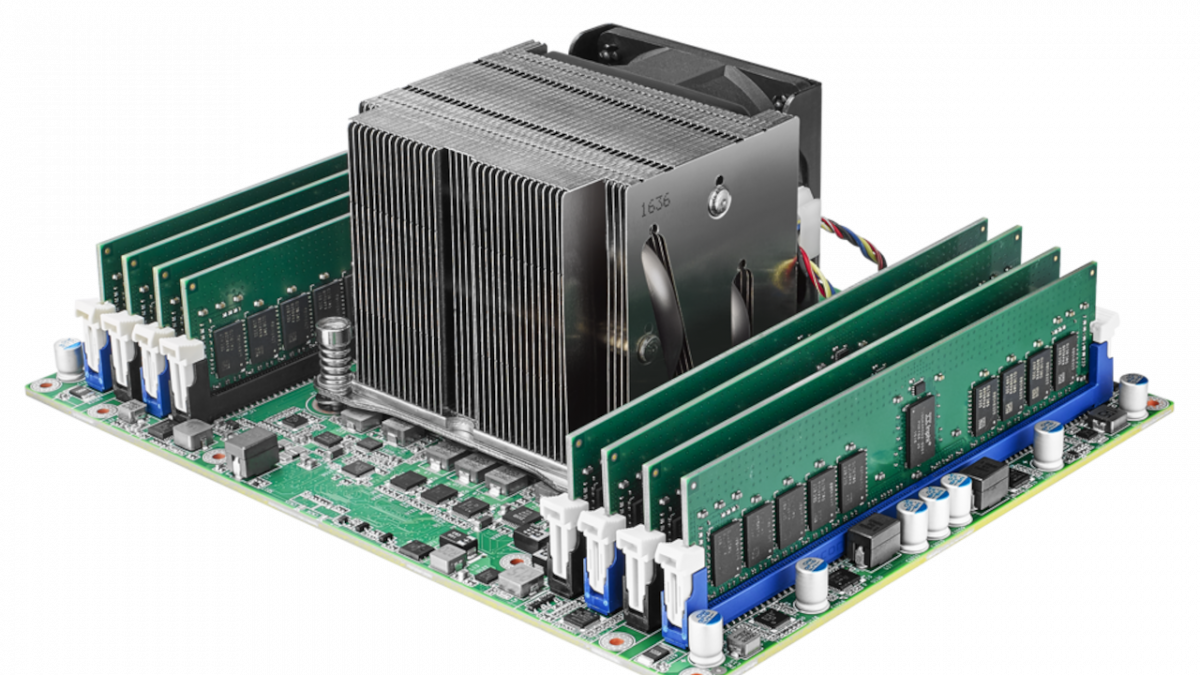High-performance computing in the edge
Source: Heise.de added 16th Dec 2020The PICMG (PCI Industrial Computer Manufacturers Group) has published a preliminary version of its specification Computer-on-Modules for High-Performance Computing COM-HPC. COM-HPC defines Computer-on-Modules in five module sizes for powerful edge servers and clients in the industrial environment. It should take into account the growing demand for computing power in the edge and provide significantly more computing power and I / O performance for edge servers and edge clients than the previous x 86 – Computer-on-Module specification COM Express capable.
COMe was 2003 introduced by Intel and Kontron as ETXexpress and 2005 as PICMG specification COM Express Revision 1.0 released. It defines a bootable PC with CPU, graphics processor, RAM and standard interfaces on a module that is connected to an application-specific carrier board via a maximum of two connectors.
COM-HPC is intended to supplement COM Express, but is not limited to x 86 processors. Instead, it also allows the use of RISC processors, such as ARM CPUs, but also FPGAs (Field Programmable Gate Arrays) and GPGPUs (General Purpose Computation on Graphics Processing Units).
Significantly increased All modules are connected to the carrier board via two 400 – pin BGA connectors that transfer a maximum of GT / s (Gigatransfers) and have a system management interface. Up to eight full-size DIMMs or four SO-DIMMs and a power consumption of 150 watts by the CPUs are permitted. COMe modules are on the other hand on 10 GT / s, two SO-DIMMs and 80 Watts limited.
COM-HPC also significantly expands the limits for I / O: The COM-HPC client modules can have up to 32 PCIe Gen4 or Gen5 lanes four USB 3 or USB 4 ports, four video interfaces and two Ethernet interfaces with a maximum of 25 Record gigabit / s. The specification sees the module sizes as 95 or 120 or 160 mm x 120 mm in front. The COM-HPC server modules may have up to 49 PCIe Gen4 or Gen5 lanes, two USB 3 or 4 USB ports, four graphics interfaces and eight 25 Gigabit Ethernet interfaces , also two GBase-T interfaces. The server modules may 160 or 200 mm x 160 mm in size and therefore significantly larger than COMe modules, for which, for example, only 32 PCIe Gen3 lanes, one 1GBase-T and four 10 may have GE interfaces. Support for PCIe targets on the module, for example for FPGA or GPU modules, is new.
The PICMG develops patent-free, open embedded computing specifications . Now that its technical subcommittee has approved the COM-HPC specification, it goes into the membership review with the pre-release. This review phase acts as the final review by the PICMG members. They include IT companies such as AMI, Intel and Supermicro as well as industrial IT providers such as ADLINK, Advantech, Amphenol, congatec and Kontron, but also Bielefeld University. The ratification is planned for the beginning 2021, in addition a platform management interface specification, a COM-HPC EEEP and a carrier board design guide should supplement the basic specification.
The abridged preview specification is available for download.
(sun)
brands: ADVANTECH Amphenol Basic Intel New other SUN Supermicro media: Heise.de keywords: Gigabit PC Review Server
Related posts
Notice: Undefined variable: all_related in /var/www/vhosts/rondea.com/httpdocs/wp-content/themes/rondea-2-0/single-article.php on line 88
Notice: Undefined variable: all_related in /var/www/vhosts/rondea.com/httpdocs/wp-content/themes/rondea-2-0/single-article.php on line 88
Related Products
Notice: Undefined variable: all_related in /var/www/vhosts/rondea.com/httpdocs/wp-content/themes/rondea-2-0/single-article.php on line 91
Warning: Invalid argument supplied for foreach() in /var/www/vhosts/rondea.com/httpdocs/wp-content/themes/rondea-2-0/single-article.php on line 91
